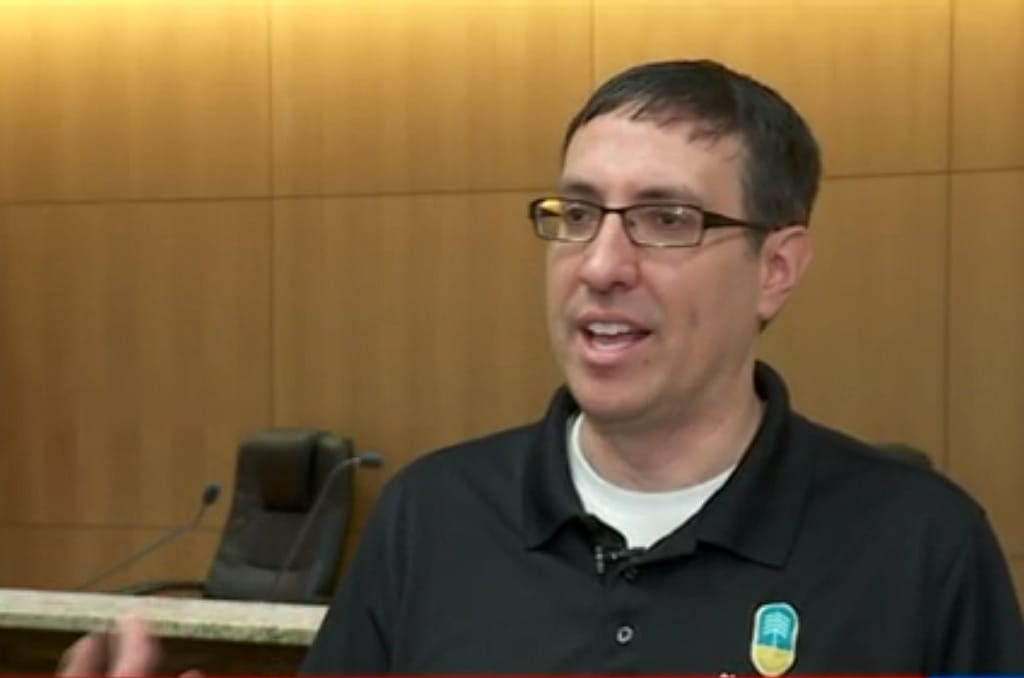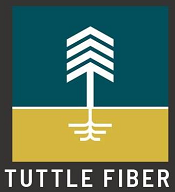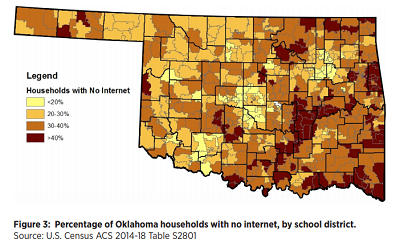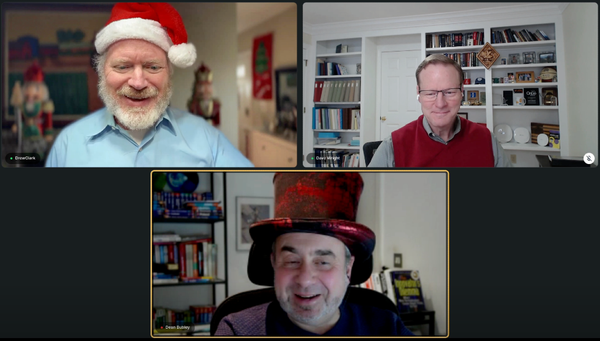Building Fiber Infrastructure Back Better: The Journey Taken by Tuttle, Oklahoma
When their connection to the World Wide Web was cut, Tuttle’s local leaders got to work.

August 27, 2021 – There’s an overwhelming tendency among regular Americans to conflate the basic infrastructure which surrounds us with permanence. Whether it’s the garbage truck predictably rumbling down the street at the same time every week, the water flowing from the tap, or our internet connection, we assume that the physical ties which bind us together will always be there.
And that’s because it mostly has, especially for community owned and operated infrastructure. When utility services are owned and operated by communities, they are by definition maintained by people who live locally for people who live locally. It’s hard to be taken by surprise and left without essential services.
But the odds tilt in the other direction when such services are delivered by outside firms. We’re seeing the consequences of this for electricity users in the wake of the Texas grid disaster last winter (as well as coming rumblings of heat-caused outages this June), but it’s a problem that’s been around longer than that for basic service providers of all types, where bankruptcies can leave whole communities high and dry.
The same consequences hold true when those firms are Internet Service Providers, beholden to interests outside of the cities and towns they serve. Tens of thousands of American households learned this very lesson last fall when AT&T announced it was leaving the DSL business and no longer making new connections to its aging infrastructure, even though those wires will continue to sit in the ground for decades to come. Buy a new house in this area, and if AT&T DSL was the only provider in town, and you’ve got few or no options.
But it happens with small providers too. Tuttle, Oklahoma (pop. 7,300) faced this reality a decade ago when the local cable company, providing the only universal wireline Internet service in the area, went bankrupt. “For a little while it got put on autopilot with nobody operating it,” City Manager Tim Young told KFOR News. “Then one day, right before an OU football game, the power got cut off and that was it for a cable service in Tuttle.”
The event left the city stranded without much warning. High-cost, high-lag, low-bandwidth satellite service from ViaSat was one option. AT&T offered DSL service in some parts of the downtown core, but the company “hadn’t upgraded its copper network in Tuttle in decades,” Young said in a recent interview.
The last choice was a regional Wireless Internet Service Provider named Rise Broadband which operated in the area. It had offered less-than-ideal service connecting government buildings for years (Tuttle got free service in exchange for providing access to the city’s vertical assets for hardware placement), but the problem for residents is that it was geared at rural areas around the town rather than the city proper. At the time, it was struggling to provide 3 Megabit per second (Mbps) symmetrical service because of the overwhelming demand by residents and businesses (even today, it only covers about two-thirds of the city, with maximum download speeds of 50 Mbps for $60/month).
Smart growth provided a better option
As a suburbanizing community southwest of Oklahoma City, Tuttle needed a better option. The city is experiencing rapid growth which began almost twenty years ago, since a bridge was built over the Canadian River providing a direct path to the metropolitan area in 2004. Tuttle’s 2020 Comprehensive Plan [pdf], released in 2004 when growth began, emphasized that future resiliency and success “will be contingent on its ability to adapt to changing economic conditions in meeting basic needs for the continued health, safety, and welfare of the residents of the community” while also positioning itself for “new quality growth and development.”
The nearby Braum’s Ice Cream plant remains the largest employer in city limits, with construction, manufacturing, and warehouses also playing a significant role in the local economy. But other sectors which require reliable, high-speed Internet access also contribute significantly, including educational and health services, finance and insurance, banking, and technology jobs for workers in nearby Oklahoma City.
All of these realities meant that when the local cable company went bankrupt, the remaining options were insufficient for the long-term vibrancy of Tuttle.
Building something back better
When their connection to the World Wide Web was cut, Tuttle’s local leaders rolled up their sleeves and got to work. Their first move was to solicit private ISPs to come to town and offer service. But they also began talking with publicly owned entities in the area. They spoke with officials in Sallisaw, a rural community about 180 miles directly east which had built a fiber network called DiamondNet to provide service to residents in town as well as a handful of surrounding communities starting in 2015. The city council also traveled to speak with engineers at the Northeast Oklahoma Electric Cooperative, which was embarking on a fiber-to-the-home project for its roughly 38,000 members scattered across seven counties. Finally, they looked nationally, noting the success of and learning lessons from municipal networks in Oregon and Colorado.
With few encouraging responses from private ISPs, local officials in Tuttle decided building and operating their own network was an undertaking at which they could succeed. The town already had an institutional network – in the form of a fiber star – in place, built in 2012 to connect the public works and public safety buildings at the same time as construction of a new city hall.
The first hurdle was dealing with a state law in Oklahoma which prevents municipalities of Tuttle’s size from taking on debt without a citywide vote. The answer to infrastructure projects like telecommunications is the establishment of a municipal trust to secure financing and development authority. Thus was born the Tuttle Development Authority, which solved the problem while also allowing the city’s other utilities (water, sewer, and natural gas) to proceed according to their preexisting plans without the additional debt burden of the upcoming Tuttle network.
From a pilot project to permanent

Once engineering and business plans were finalized, the city began with a small pilot project aimed at a few denser neighborhoods where an internal feasibility study had projected a high take rate among residents. It was immediately popular, Young and City Broadband Manager Laurie Koelsch said in a recent interview. So popular, in fact, that it led the city to speed up construction. Ultimately, Tuttle took on $10 million in debt via private lending, using revenues from its other utility system revenues as collateral.
With firm plans to forge ahead, the city’s public works formed a new construction department to coordinate digging around the city, and served as the first stop for the new fiber network. Construction began in 2017. By November 2019 the network passed 55 percent of premises, and 800 households had taken service. Originally projected to be a five-year project, Tuttle, Oklahoma’s citywide Fiber-to-the-Home network was completed in the late fall of 2020, after just 3 years, driven by strong residential and business demand.
The Gigabit Passive Optical Network passes nearly every premises in town with the exception of a couple of small areas being built right now. About 85 percent of the network ended up being buried. The remaining aerial fiber hangs on Oklahoma Electric Cooperative’s power poles (the other electric service provider in town, whose lines run parallel on the other side of the road, is Public Services of Oklahoma). Tuttle’s design called for strand counts ranging from as low as six to as high as 288.
The network has been a success with residents since day one, but it also hit an important milestone shortly after construction was finished last December: its financial break-even point. In response, the city council announced it was lowering prices for residents, Young said. From the start, the network aimed at a 50 percent take rate. Today it meets or exceeds that threshold in almost every area (hitting an average of 54.4 percent across its footprint), and sees take rates as high as 90 percent in parts of town. Today it passes 2,864 premises, with 1,557 taking service.
While neither AT&T nor the local WISP have responded, Tuttle Fiber did play a role in spurring the local electric cooperative to embark upon its own FTTH build for its members, which will benefit surrounding communities.
We wanted to be able to provide service to everybody – Laurie Koelsch, Broadband Manager
Local resiliency means community savings
The success of the network is a testament to the intergovernmental cooperation between the utilities. Tuttle Fiber serves as the IT department for the city; this also strengthens local resiliency while keeping expertise in-house. It connects all city buildings, simplifying intradepartmental as well as citywide services, and is a stark contrast to the old fixed wireless VoIP system which, Young said, was plagued by a lack of reliability and slow speeds. Today that’s no longer a problem, and staff transitioned quickly to working from home with the onset of the pandemic last year.
The network likewise links the city library and several healthcare facilities, not only solving existing connectivity problems for the local government but giving existing and new residents who decide to settle there, businesses, and community anchor institutions world-class Internet access for decades to come.
Tuttle is ten miles wide, with the city hall situated in the downtown which is the extreme west side of the city. Many of its buildings – including fire stations and animal control – as well as much of the new residential growth and development are on the east side of Tuttle. Having a robust fiber network in place not only allows for instantaneous and robust communication, but sets a foundation for future growth. The network is beginning to explore the extra value, flexibility, and capabilities of using the network for smart-city services for its traffic signals, cameras, the installation of remote locks at parks, the deployment of public Wi-Fi, improved SCADA systems, and water/wastewater monitoring. In fact, a new wastewater plant is currently being built and Tuttle is bringing fiber as part of the project to communicate with lift stations and obviate the need for 24/7 staffing with real-time remote monitoring.
At present, Tuttle Fiber only offers Internet service. It does not connect the local elementary, middle, or high schools, which get their access via a single statewide network. It also doesn’t currently have a low-income tier, but network officials are looking into options down the road. Installation, maintenance, and most operational services are done by the city, with the exception of a second help desk which operates during the holidays and overnights maintained by an outside contractor.
Current Tuttle Fiber subscribers can choose a symmetrical 100 Mbps connection for $55/month or symmetrical 1 Gigabit per second (Gbps) service for $85/month. One-time installation fees run $240, which can be paid at the start or in monthly installments for two years. This fee goes directly to the costs of the drop and Optical Network Terminal (ONT) that completes the network connection on their residences, with the city shouldering up to $1,000 per home of the remainder. For their investment, residents also get a free gigabit-capable router for in-home ethernet and Wi-Fi connections. Businesses have symmetrical 25 Mbps, 50 Mbps, and 1 Gbps tier options for $65, $100, and $200/month, respectively.
There have been challenges along the way, Young and Koelsch shared. Building telecommunications infrastructure isn’t exactly the same as other city services; there are some unique construction, legal, and operational considerations to be made, and all of it requires planning and forethought to execute well. “It was definitely a learning curve for us,” Young said, but one he’d do all over again. Part of the network’s success can no doubt be traced to Young and Koelsch’s desire to see small Oklahoma communities succeed. Koelsh was born in the nearby town of Yukon and earned her Bachelor’s degree in Computer Information Systems from Oklahoma State before joining Tuttle in 2017. Young was born just ten miles northeast, in Mustang, earned degrees from the University of Oklahoma and the University of Texas at Arlington, and has been in city management and community development for the last 20 years.
I believe more municipalities should take on projects like this. Fiber’s no different than water, sewer, and streets. You’ve got to have your connection to the information superhighway. When you’re a for-profit company, you don’t have any incentive to upgrade your systems unless you have competition. As a municipal government, we’re not here to make money. Our focus is to provide the best possible system for our residents and so we are always willing to upgrade and invest in those systems. – Tim Young, Tuttle City Manager
A future-proof network for the community
Today, the state of Oklahoma ranks near the bottom nationally for broadband access, according to the Oklahoma Policy Institute. Almost a quarter of the state lacks wireline service at the FCC’s minimum speed standard of 25/3 Mbps, and more than 150,000 students did not have the service necessary to learn remotely during the Covid-19 pandemic. Households in rural areas are twice as likely to have no connectivity options, as are those earning less than $20,000/year: 40 percent of the latter have no Internet access (including via smartphone), compared to just 6 percent of those households making $75,000 or more. Residents of Tuttle are among the just 1 in 4 who have access to fiber service from a provider.

Tuttle, Oklahoma’s leap to action when its cable provider went bankrupt and left them stranded was not an inevitability. The city could have lobbied the local WISP provider to increase coverage and invest in more hardware to boost speeds, but the capacity, reliability, and speed (not to mention local accountability) of the resultant network can’t compare to municipal fiber. All of this sets this rapidly growing community on a path to fast, affordable connectivity for decades to come.
Editor’s Note: This piece was authored by Ry Marcattilio-McCracken, senior researcher for the Institute for Local Self Reliance’s Community Broadband Network Initiative. Originally appearing at MuniNetworks.org on August 17, 2021, the piece is republished with permission. Another version of the piece was originally published by the National League of Cities.
Oklahoma broadband map from Brian Whitacre, Professor and Jean & Patsy Neustadt Chair in the Department of Agricultural Economics, via Oklahoma State University Extension, “Broadband Access Across Oklahoma During Covid-19” (2021).








Member discussion